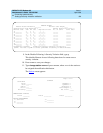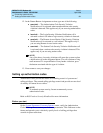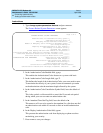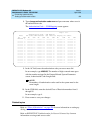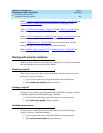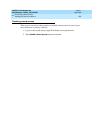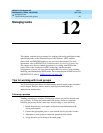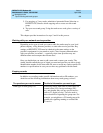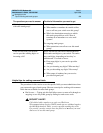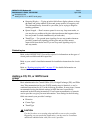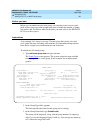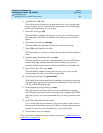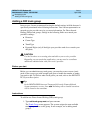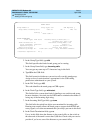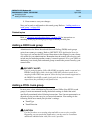
DEFINITY ECS Release 8.2
Administrator’s Guide
555-233-506
Issue 1
April 2000
Managing trunks
338Tips for working with trunk groups
12
5. For outgoing or 2-way trunks, administer Automatic Route Selection so
DEFINITY ECS knows which outgoing calls to route over this trunk
group.
6. Test your new trunk group. Using the trunk access code, place a variety of
calls.
This chapter provides instructions for steps 3 and 4 in this process.
Working with your network service provider
Depending on the type of trunk you want to add, the vendor may be your local
phone company, a long distance provider, or some other service provider. Key
settings on DEFINITY ECS must be identical to the same settings on the
provider’s equipment for your trunks to work. Clear, frequent communication
with your provider is essential — especially since some providers may use
different terms and acronyms than Lucent does!
Once you decide that you want to add a new trunk, contact your vendor. The
vendor should confirm the type of signal you want and provide you with a circuit
identification number for the new trunk. Be sure to record any vendor-specific ID
numbers or specifications in case you ever have any problems with this trunk.
Keeping records
In addition to recording vendor-specific information such as ID numbers, you
should record the following information about every trunk group you have.
The questions you need to answer The kind of information you need to get
What type of trunk group is it? You need to know what kind of trunks these are
(central office (CO), foreign exchange (FX),
etc.) and whether they use any special services
(such as T1 digital service). You also need to
know what kind of signaling the group uses. For
example, you might have a CO trunk group with
ground-start signaling running on a robbed-bit
T1 service.



